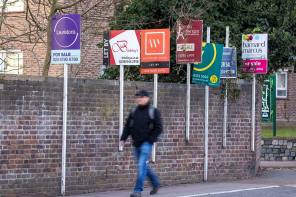

Parents are set to spend £8.8bn this year helping to house their children as youngsters are hit by growing affordability pressures.
The ‘Bank of Mum and Dad’ (BoMaD) now helps 9 per cent of renters across the UK with financial commitments to their landlords on nearly 460,000 properties, according to research by L&G and the Centre for Economics & Business Research (Cebr).
Parents will spend £2.3bn on rental payments in 2017 and when combined with the £6.5bn set to be paid out by the BoMaD to support first-time buyers, it means parents will spend a total of £8.8bn this year.
This is more money than Virgin Money, the eighth biggest mortgage lender in the UK by volume, paid out in 2016 when it lent £8.4bn and just shy of the amount Coventry Building Society, the seventh biggest lender in the UK, lent.
Parents’ payments to the rental sector are highest in London and the East of England, totalling £626m and £604m in these areas respectively.
Some 10 per cent of renters have had BoMaD help with their security deposit, while 6 per cent have had support with moving expenses and 5 per cent with letting agent fees.
With youngsters facing a lack of affordable housing, falling real wage growth and mounting levels of student debt, L&G expects BoMaD to play an increasingly important role in the private rented sector.
And with recent research showing landlords have been increasing rents - possibly in response to tax changes in the buy-to-let sector - youngsters could face more difficulties in making payments.
Dan Batterton, fund manager for build to rent at Legal & General Investment Management Real Assets, said the figures were a symptom of the UK’s “broken housing market”.
He said: “The build-to-rent sector is only going to become more important in the UK’s housing mix. We need to be able to offer young people a good selection of affordable options for rental properties - either for the long term or as a step to buying their own home.
“Institutions like Legal & General can regenerate not just residential housing, but the towns and cities in which the homes are built. Infrastructure, jobs and local economic growth are all key to creating thriving communities where people want to live.”
Build-to-rent involves the construction of properties specifically for the rental market, providing a longer-term business model for the sector.
Liz Syms, chief executive at London-based Connect Mortgages, said: “I think build-to-rent is certainly one option. We do have a shortage of housing anyway, and we have to address that. With the younger people of today, there is a lot less of a tendency for them to purchase their own home.
“Jobs are no longer jobs for life and they are moving around a lot. We need more property to rent to accommodate that flexibility. Build to rent is one way to achieve that.”
But Ms Syms also suggested the government should ease some of the pressure on private landlords, who have been hit hard by tax changes and stricter underwriting rules.
“We are seeing a rise in professional HMOs [houses in multiple occupation],” she added. “They used to be restricted to multi-tenanted DSS, but professional city sharers are sharing because it is more cost-effective than renting a whole property in certain areas.
“We expect more landlords to look at that going forward because it helps to improve rent yields.”
simon.allin@ft.com



